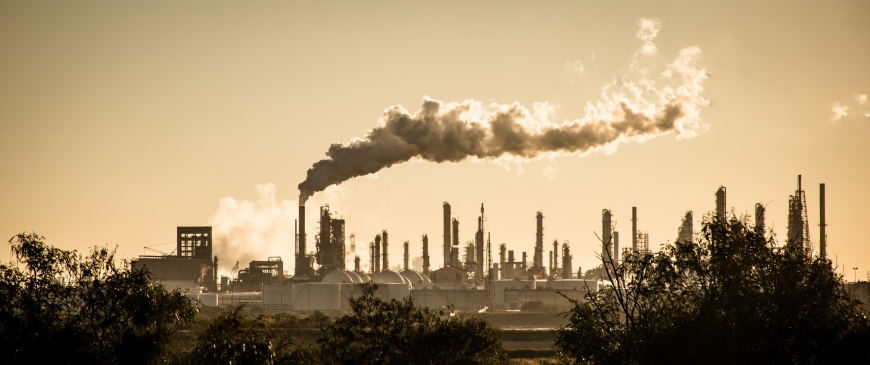
Border carbon adjustment: how to get it right
The Centre for European Reform’s Sam Lowe explains how the European Union could go about making a border carbon tax compatible with multilateral trade rules while keeping costs under control.
Trade commissioner-designate Phil Hogan has a difficult task ahead of him. As well as navigating the ebbs and flows of Donald Trump’s trade war, he will need to convince the European Parliament that the EU’s trade ambitions are compatible with its commitment to combat climate change.
As such, President-elect Ursula von der Leyen has tasked Hogan with designing and introducing a World Trade Organization compliant carbon border tax. This would see a tax levied on imported goods at a rate commensurate with the amount of CO2 emitted in their production.
Tricky and costly
In theory, a carbon border tax would allow the EU to pursue more ambitious climate change policies in the knowledge that domestic industry would not be unfairly undercut by foreign suppliers. In practice, implementing an effective carbon border tax will be tricky, costly and sure to provoke legal challenge. But as I argue in a report for the Centre for European Reform, if done properly, it could be successful.
Internal EU discussions have so far focussed on the idea of levying a tax on imports equivalent to the costs borne by domestic industries as a result of needing to buy carbon permits under the European Emissions Trading System: at the time of writing ETS carbon permits trade at around €25 per tonne of CO2.
Importers would be required to pay a levy equivalent to the average cost of acquiring the carbon permits necessary from a domestic company to produce the same product – taking into account that, for now, a significant number of permits are handed out for free. This so-called Border Carbon Adjustment, or BCA, would only apply in the event that the imported product originated from a country that does not have an equivalent domestic pricing regime for carbon as the EU. Non-EU companies could also exempt themselves, or claim a lower BCA rate, by demonstrating that their production methods are more carbon efficient than the average EU equivalent producer.
Overcoming the WTO challenge
Such an approach throws up a number of issues. These include questions of compatibility with WTO rules on non-discrimination; additional cost and complexity for businesses; and the difficulty of assessing the origin of a product. However, none of these are insurmountable.
The EU must work on the assumption that any BCA will be challenged at the WTO. In order to give itself the best chance of winning a case, the EU will need to ensure that its processes for assessing third-country equivalence are transparent and open. For that, it should make its criteria as objective as possible and put in place a straight-forward mechanism so that third countries can seek advice and appeal any EU decision to consider them to be less climate friendly. Additionally, the EU should make it as easy as possible for companies to seek relief based on proof of actual greenhouse gas emissions.
To minimise the risk of a legal challenge, the EU could initially apply the BCA only to a small number of emission-heavy industrial sectors, as it has with the ETS, and make it subject to regular review. The EU would need to decide how and when to account for emissions associated with transport, and how best to tackle the issue of agricultural emissions, acknowledging that it would prove controversial with countries like Brazil and would need to be justifiable vis-à-vis domestic producers, whose emissions are largely untaxed.
There is then the issue of complexity. Calculating the embedded carbon within a given product, with inputs potentially originating from many different countries and regulatory jurisdictions, is not easy and it would probably be expensive. Importers might find that the cost of demonstrating that their product has lower embedded carbon than the EU average, and therefore deserves a reduced rate, is higher than the default carbon levy.
How to minimse costs
The EU should take on board much of the financial and administrative burden, particularly for small and medium-sized companies. This could involve the Commission funding the creation and continued support of third-party certification bodies able to provide an objective assessment of a company’s CO2 emissions. Some of this money would be recouped from BCA tax revenues. But raising money should not be the objective: the aim is to allow Europe to become more ambitious on tackling climate change without risking economic damage – and to help other countries shift towards low-carbon production instead of undercutting European environmental standards.
There would also need to be origin-based criteria that determine exactly how much work needs to be carried out on a product in a given territory for it to qualify as originating from that jurisdiction. This could be determined using the pre-existing method for determining non-preferential rules of origin which all EU importers already have to follow.
The biggest challenge of all will be ensuring that EU efforts to create a BCA do not undermine the international trading system even further. Least developed countries should also be exempted from the BCA to avoid the costs of mitigating climate change being borne by those countries least responsible.
If the EU is to both meet its own climate change mitigation targets and effectively contribute to keeping global temperature rises to below 1.5°C, it needs to be much more ambitious. A well-designed BCA could open political space within the EU for increased climate action. An effective BCT could also encourage action beyond the EU’s borders as it would motivate third countries to match the EU’s climate ambition if they want to be exempt from border carbon taxes. There are legal, practical and political hurdles standing in the way of a successful EU BCA. But that should not stop the EU from trying.
Sam Lowe is a senior research fellow at the Centre for European Reform
